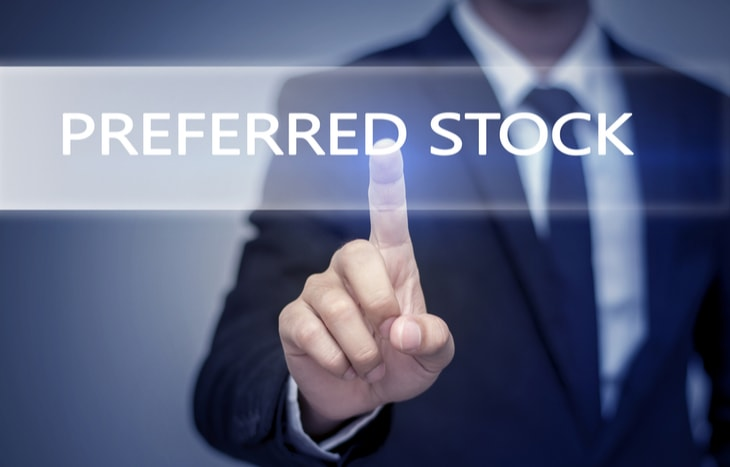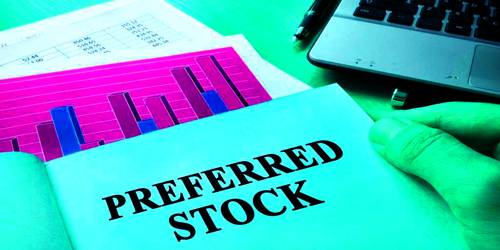A Guide About How Does Preferred Stock Work?
Triston Martin
Feb 06, 2024
Introduction
How does preferred stock work? Regarding financial instruments, preferred stock is the equivalent of the Frankenstein monster. They combine elements of regular stocks and bonds to make something completely new. Preferred stocks have been available for quite some time. Still, recently, firms have begun issuing them as an alternative to traditional bonds to raise capital and attract investors seeking a reliable source of income. First, let's define terms. And should you include them in your portfolio?
Preferred stock can be more appealing to the risk-averse investor than high-yield common stock because of the greater certainty of dividend payments. For this reason, preferred shareholders are given priority over common shareholders when it comes to the distribution of a company's assets. In the event of financial difficulty, preferred dividends must be paid before common stock payments. Unlike ordinary dividends, preferred dividends are stable and independent of the company's earnings.
Due to the fixed dividend payments, preferred stock prices are often much more stable than common stock prices. Still, reading the fine print before plunging headfirst into any purchase is wise. Preferred stocks, which can be complicated because of the options available, are even more subject to this restriction.
Understanding Preferred Stocks

Preferred stock is appealing because its fixed-income payouts are often higher than bonds for a given share investment. If a company goes bankrupt, the preferred investors get paid dividends, and liquidation proceeds before the common stockholders do. When compared to common stock, its value tends to be more consistent. In addition, its liquidity exceeds that of comparable quality corporate bonds.
One common element of preferred stock is a provision allowing the issuing company to "call in" or voluntarily cancel the outstanding shares in exchange for cash. The investor will therefore miss out on any potential gains in value. The lack of a maturity date adds another layer of unpredictability to the potential return of the principal. There is little room for growth, no voting power, and sensitivity to interest rate fluctuations.
When is it Called, and Does it Mature?
The 'call date' is a feature of most preferred. The issuer has the right to exercise its option to repurchase your shares on or after the specified date. If the corporation does that, you'll get paid the par value in cash for each share you possess. Preferred stock is rarely called since it requires the issuing company to generate funds.
Preferred stock may also have a "maturity date" when the investor's right to receive dividends ends. The corporation will return the cash value of the shares to you when they mature. Some of the risk associated with holding preferred stock is mitigated by the fact that holders receive the issue price back at maturity regardless of how low the stock's price may have fallen during their ownership (unless the company goes bankrupt or liquidates).
Preferred Stock Payments Are Not Guaranteed

Even though preferred stock can be traded on stock exchanges like a bond and has certain bond-like features, it lacks the protections and guarantees that come with actual bonds. When you invest in a bond issued by a firm, you are effectively lending the company money. The business owes you money and must repay you at certain intervals (plus interest). The bond will default if the company fails to make a payment when due, which might have severe consequences for its finances. You, as a bondholder, have the right to pursue legal action to recover your principal and interest (although doing so will be a huge hassle).
The same cannot be said for preferred shares. If the corporation decides to skip your preferred stock payment (unlikely, but possible if they're having financial difficulties), they won't be in default because the preferred stock is officially treated like a stock (and not as debt). And there's a chance you'll never see that payment if you bought the wrong kind of preferred shares.
Callable
If you own callable preferred stock, the corporation can repurchase your shares at a predetermined price at a future date. This is typically in the company's best interest because it caps your potential profit from an increase in the preferred stock price. To illustrate, assume you invest in preferred stock for $25 per share, but the stock is callable, meaning the firm can repurchase it from you at any time if its value rises to $30. What if, however, the price of a share of preferred stock increases to $35? You would have made more money selling your shares at $35 per share rather than $30 had the firm not bought them back.
Conclusion
Preferred stocks are a type of equity security that behaves similarly to debt in many ways. The fixed-income payments from preferred stock are more generous than those from bonds for the same share price. One common element of preferred stock is a provision allowing the issuing company to "call in" or voluntarily cancel the outstanding shares in exchange for cash. When calculating a company's taxable income, dividends received on preferred stock can be deducted between 50 and 65 percent.







